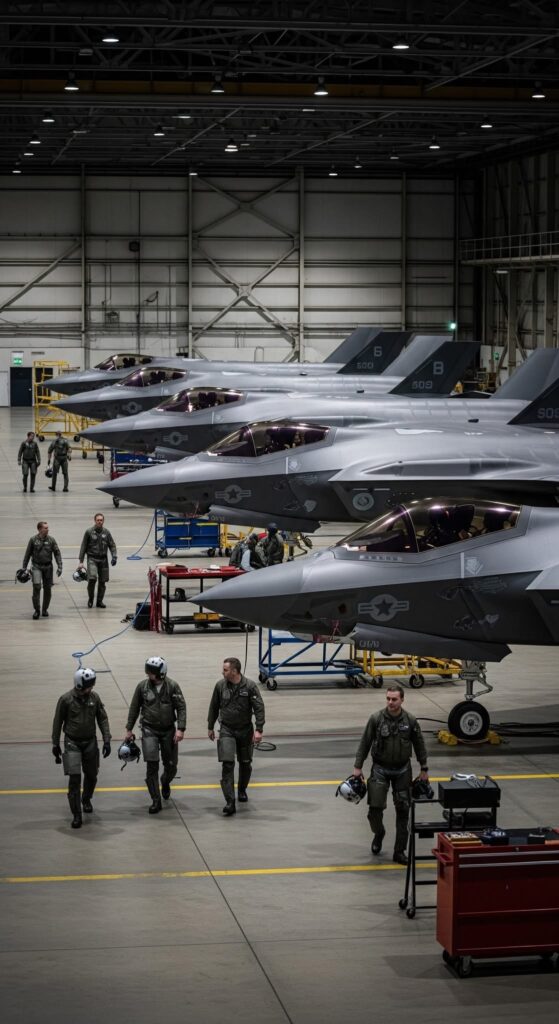
The F-35 Lightning is one of the most advanced fighter jets ever developed, representing a new generation of air combat capability. Built by Lockheed Martin, the F-35 is a family of stealth multirole aircraft designed to perform ground attack, reconnaissance, and air defense missions with unmatched efficiency. It was created to serve multiple branches of the United States military and allied forces worldwide, making it one of the most versatile and widely deployed modern fighters.
The F-35 program includes three main variants: the F-35A, F-35B, and F-35C. Each model was designed to meet specific needs. The F-35A is the conventional takeoff and landing version used primarily by the U.S. Air Force and partner nations. The F-35B, designed for the Marine Corps and several allies, can perform short takeoffs and vertical landings, making it ideal for operations from amphibious assault ships and smaller runways. The F-35C, built for the U.S. Navy, is carrier-capable with larger wings and reinforced landing gear to handle catapult launches and arrested recoveries on aircraft carriers. This flexibility ensures the F-35 can operate in diverse environments, from traditional air bases to naval operations.
One of the defining features of the F-35 is its stealth capability. Its shape, materials, and internal weapon bays are designed to reduce radar cross-section, allowing it to operate in heavily defended areas where older jets would be vulnerable. In addition to stealth, the aircraft boasts advanced sensor fusion, combining data from radar, electronic warfare systems, and distributed aperture sensors to give pilots an unmatched picture of the battlefield. This technology allows the F-35 to act not only as a fighter but also as a powerful intelligence-gathering platform that can share information with allied forces in real time.
The jet’s avionics suite sets it apart from previous generations. The pilot interacts with the aircraft through a large touchscreen display and a helmet-mounted display system that projects critical flight and combat information directly onto the visor. This gives pilots enhanced situational awareness, allowing them to make faster and better-informed decisions during missions. The F-35 also carries advanced electronic warfare systems, capable of jamming enemy radars and sensors while guiding precision strikes.
Performance-wise, the F-35 combines speed, agility, and survivability. It is powered by the Pratt & Whitney F135 engine, one of the most powerful fighter jet engines ever built. This provides the thrust necessary for supersonic flight and, in the case of the F-35B, enables vertical lift for its unique landing and takeoff capabilities. The jet can carry a wide range of weapons, from air-to-air missiles to precision-guided bombs, all while maintaining a low profile to enemy detection systems.
The F-35 has also been designed with international collaboration in mind. Partner nations such as the United Kingdom, Italy, Japan, and Australia have invested in the program, and the aircraft has already been integrated into several allied air forces. This ensures that the F-35 is not only a symbol of American air power but also a key component of global defense cooperation.
In summary, the F-35 Lightning fighting jet stands as a cutting-edge blend of stealth, advanced sensors, and multirole capability. It represents the future of air combat by combining traditional fighter performance with next-generation technology, making it one of the most significant aircraft of the 21st century.


